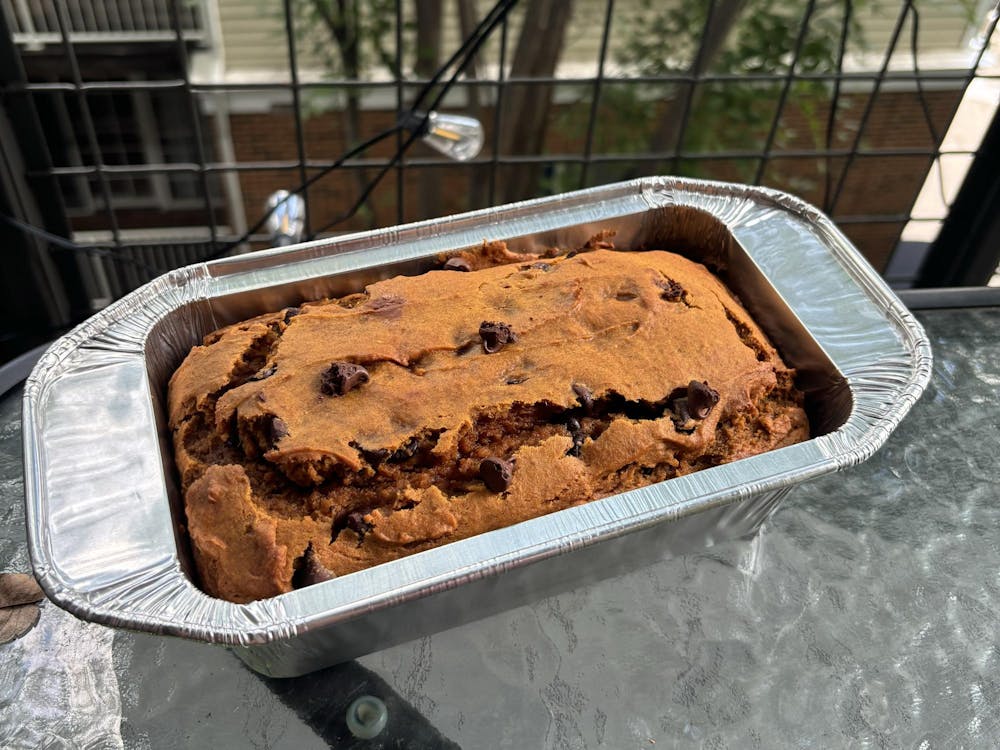I like to think I have a base-level knowledge of proper mealtime etiquette. If you put two forks in front of me, I could guess which one is for the salad. I absolutely do not chew with my mouth open, and if Richard Gere brought me as his date to an important business dinner upon which the fate of his company rested, I think I’d be able to handle the escargot — “slippery little suckers.”
But it’s time for a revision of the old rules, for a new chapter in “The Amy Vanderbilt Complete Book of Etiquette” — I’d be happy to loan you a copy if you’d like to read it — which my grandmother gave to me for two consecutive birthdays. The conditions of modernity have ushered in a new fixture of the dining experience.
Now, between signing the check and sipping what’s left of your watered-down iced tea, meals are punctuated by a three-minute period of absolute silence as everyone sits hunched over their phone screens, drafting the descriptions of their Venmo payments.
This phenomenon has become a ubiquitous and universal component of every meal I’ve shared in the past year. It has permeated the fabric of every social interaction that involves spending money. I put enormous weight on the content of these three-word descriptions — they must be at once witty and pertinent, eloquently articulated and sparingly worded.
But why do I care so much that the message accompanying the $5 I pay you for splitting the Uber ride home be peppered with puns? Why do I insist that the mundane transactions of fulfilling my IOUs should be injected with whimsy?
I have theories. On one hand, I see the artfully crafted wordplay or the thoughtfully organized string of emojis to be a sort of gratuity — a tip that I can offer to the person who so obligingly wielded their debit card for the good of the group. When someone agrees to foot the bill at a meal, I feel grateful to them and want to make the exchange as pleasurable as possible.
So, when my friend agrees to pick up my copy of “David Copperfield” from the bookstore, the least I can do to thank her for her kindness is to accompany the appropriate funds with something that might make her laugh — “Kate Snyder paid you $19.85 for ‘big Dickens energy.’”
When I asked my best friend if she had any memos that she was particularly proud of, she recalled fondly the night that she had paid for her sister’s fro-yo and doled out a charge for “Arch’s de triomphe.” Pretty good one.
Money is an uncomfortable subject as it is, and I think we craft our Venmo messages to dispel some of that tension. But there’s another dimension to the app that influences the composition of our memos. By virtue of Venmo’s organization, the interpersonal exchanges that we share with our roommates or siblings are immediately made public — posted into an endless newsfeed of chronologically-ordered transactions.
In turn, Venmo is a hub for novel, unadulterated glimpses into our friends’ social lives. I know that my camp counselor just rented an Airbnb in Breckenridge, that my high school boyfriend ate ice cream last Tuesday and that my cousin forgot to pay her part of the water bill this month.
This is more than I could ever glean from any Instagram scroll-session or Snapchat story. The Venmo timeline is, ostensibly, completely lacking the conscious curation of other social media — it’s not all vacation pictures and brunch spreads. It’s the nitty-gritty of our everyday — the unexciting, the mundane.
But that’s only on the surface. As users of the app, Venmo is not only the perfect place for the hopelessly nosy, but also for manicuring our own personas. When we write a clever payment description, we do so under the pretense of privacy — the message is directed as part of a personal exchange. Once it’s posted though, it’s available for everyone to see.
As a result, every Venmo payment is an opportunity for an “Oh, I didn’t see you there” moment. “Oops! Did you see me being funny? That was just meant for my friend! I’m so embarrassed!” But I’m not embarrassed. I knew they’d see the pun — I wanted them to see the pun. How else could I let people know that I make great puns?
No other app can offer us this luxury — the chance to flex our best traits, our humor, our brimming social calendars — all under the guise of humility. There’s a lot hanging in the Venmo balance.
Kate Snyder is a Life Columnist for The Cavalier Daily. She can be reached at life@cavalierdaily.com





